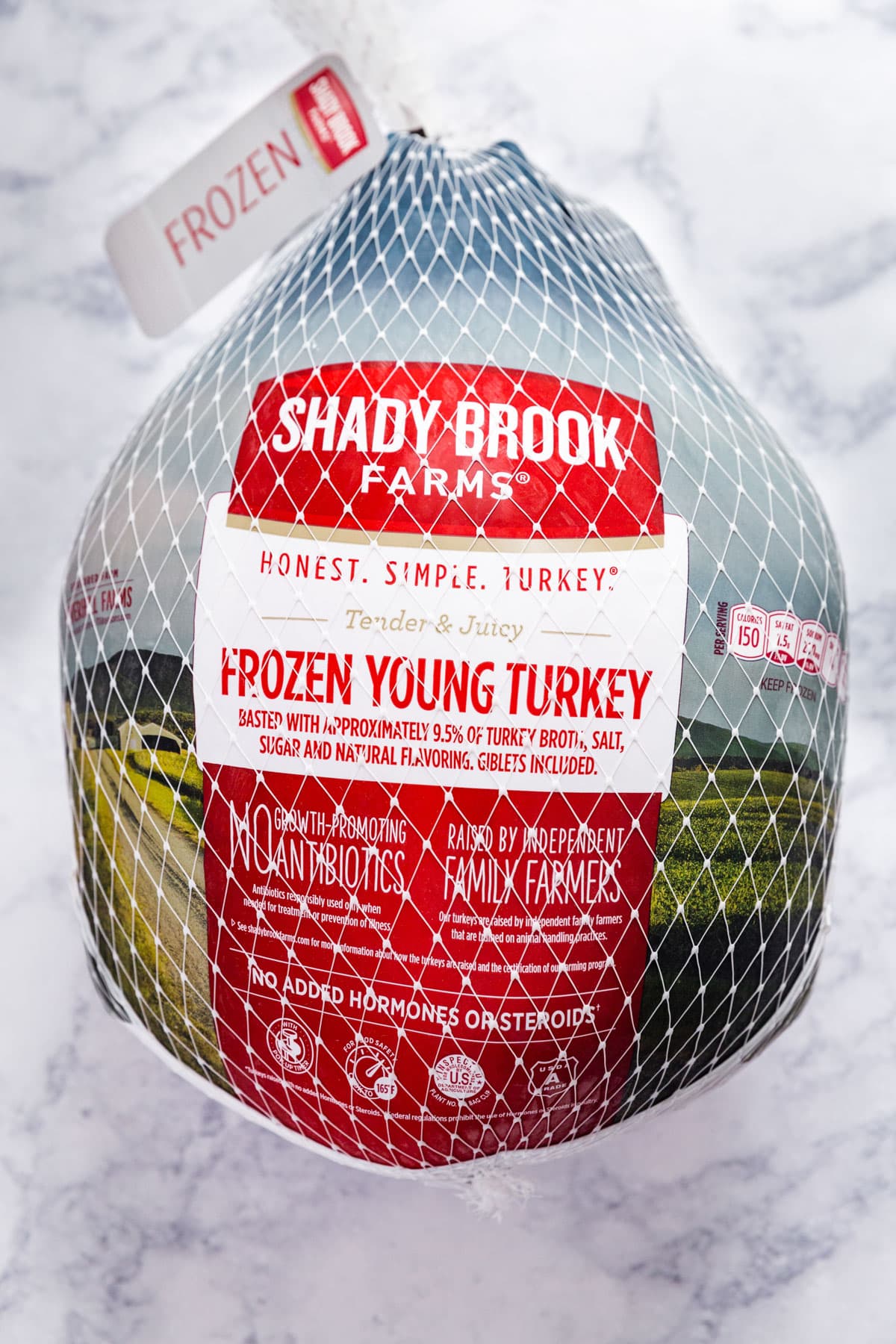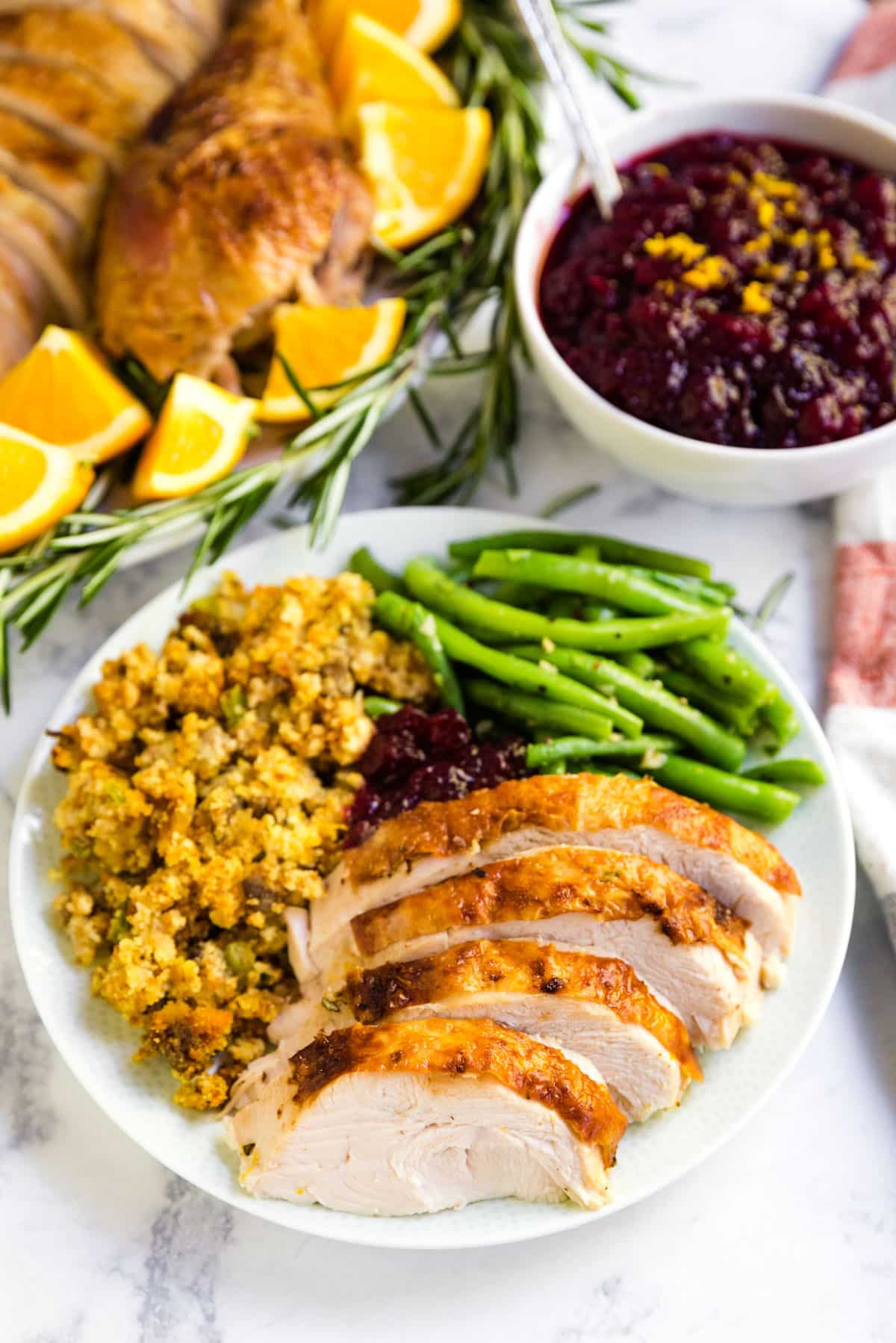Whole turkey with oranges and rosemary is seriously delicious. With just a few simple ingredients, you can create a delicious and visually striking turkey without any effort with this incredibly simple recipe.
Are you ready to impress your guests with a Thanksgiving turkey that’s bursting with flavor? Look no further than this guide to stuffing your turkey with oranges and rosemary! This simple yet delicious technique adds a touch of elegance and sophistication to your holiday feast, leaving everyone wanting more.
Why Stuff with Oranges and Rosemary?
- Citrusy Delight: The oranges infuse the turkey with a bright, refreshing flavor that perfectly complements the savory notes of the meat.
- Aromatic Magic: Rosemary adds a warm, earthy fragrance that awakens the senses and creates a truly inviting aroma in your kitchen.
- Flavorful Fusion: The combination of oranges and rosemary creates a harmonious symphony of tastes, elevating your turkey to a whole new level.
Choosing the Perfect Turkey:
- Size Matters: Select a turkey that’s large enough to accommodate your stuffing without becoming overcrowded. A 12-14 pound turkey is a good starting point.
- Freshness is Key: Opt for a fresh turkey whenever possible. If frozen, thaw it completely in the refrigerator before stuffing and cooking.
- Quality Counts: Choose a high-quality turkey from a reputable source to ensure the best flavor and texture.
Preparing the Stuffing:
- Citrusy Goodness: Quarter two oranges and one lemon. Add them to your stuffing along with chopped onion, garlic, and fresh rosemary sprigs.
- Seasoning Perfection: Season the stuffing generously with salt and pepper to enhance the flavors.
- Optional Additions: Feel free to add other ingredients to your stuffing, such as chopped nuts, dried cranberries, or sausage for a heartier texture.
Stuffing the Turkey:
- Gently Loosen the Skin: Carefully separate the skin from the breast meat, creating a pocket for the stuffing.
- Fill with Flavor: Gently tuck the stuffing under the skin, ensuring even distribution throughout the breast area.
- Secure the Stuffing: Use kitchen twine to tie the legs together, preventing the stuffing from escaping during cooking.
Roasting to Perfection:
- Preheat the Oven: Set your oven to 325°F (163°C) to ensure even cooking.
- Baste for Golden Brown Skin: Baste the turkey with melted butter or olive oil every 30 minutes for a crispy, golden-brown skin.
- Internal Temperature Check: Use a meat thermometer to check the internal temperature of the turkey. It should reach 165°F (74°C) in the thickest part of the thigh.
- Rest and Enjoy: Allow the turkey to rest for at least 20 minutes before carving to ensure juicy, tender meat.
Additional Tips:
- Brining the Turkey: Consider brining your turkey before roasting for extra moisture and flavor.
- Carving Expertise: Learn the proper carving techniques to ensure beautiful presentation and even slices.
- Gravy Goodness: Use the pan drippings to make a delicious gravy, adding even more flavor to your Thanksgiving feast.
With this guide, you’ll be able to stuff your turkey with oranges and rosemary like a pro, creating a Thanksgiving masterpiece that will leave your guests in awe Remember, cooking with passion and creativity is the key to a truly memorable meal!
Happy Thanksgiving!
#Turkey #Thanksgiving #Stuffing #Oranges #Rosemary #Flavorful #Holiday #Feast #Cooking #Tips #Guide
Ingredient Information and Substitutions
- Whole Turkey: To be honest, I think a spatchcocked bird tastes better. The main benefit of spatchcocking a turkey is that it cooks more quickly and evenly, making the bird juicier. I wrote an entire post about it. You can ask your butcher to do it for you, or follow the instructions in that post. This recipe works well with smaller or larger turkeys; I wrote it for a 15-pound bird. I.
- Brine: For a juicier and more flavorful bird, immerse the entire bird in a brine made of water, Kosher salt, brown sugar, rosemary, orange, and bay leaf if you’re roasting it without butterflying. If spatchcocking, this is not necessary.
- Compound Butter: To make a perfectly flavored and delectable turkey, combine salted butter, Kosher salt, black pepper, onion powder, garlic powder, rosemary, and orange zest.
- Turkey and Pan Preparation: I start by sprinkling my pan with water and then adding a layer of onions, garlic, rosemary, and oranges. I season the bird with salt and pepper and then stuff it with onions, garlic, oranges, and rosemary. These aid in creating flavorful drippings that, when combined with more Turkey Broth, can thicken your gravy as the bird rests.


How to Carve a Turkey
This can seem intimidating but doesn’t have to be. To make the process of separating parts easier, locate the joint. Also, make sure to cut the meat against its grain.
Here’s how I break down my rested turkey:
- If possible remove the wishbone. This is under the turkey breasts, on the wing side of the bird. To remove it, cut on both sides of it and give it a firm tug. This is optional, but it facilitates the process of removing the breast meat.
- Next, make a cut through the skin that separates the turkey leg from the breast meat, then pull the leg down to reveal the joint (use your muscles!). To remove the legs, start with the tip of your knife and cut through the hip joint. After that, you can cut through the joint that joins the thighs and the drums, and if you’d like, you can also slice and remove the bone from the thigh meat.
- By slicing down the side of the breast bone and peeling the breast meat, you can remove the breast meat in one piece (use longer strokes to avoid sawing the meat). Next, cut the breast from tip to tip against the grain.
- Pull down the wings to expose the joint. Cut through the joint and remove the wings.
- Make sure to save the carcass for making turkey soup, and use all of the pan drippings for making gravy (you can thicken with a flour or cornstarch slurry on your stovetop and add more store-bought or homemade turkey broth). Be sure to use a fat separator first!).

Roast Turkey with Onions, Oranges and Herbs
FAQ
Why do people put oranges in turkeys?
What fruit is good to stuff a turkey?
What’s the best thing to stuff a turkey with?
What to put inside a turkey for Flavour?
How do you cook a fried turkey with citrus?
Stuff the orange, lemon, and lime wedges into the turkey cavity with your hands, and then stuff in the herbs. Any unused citrus wedges can be used as a garnish on the turkey platter. Tie the legs together with some cooking string to keep moisture and heat inside the turkey for steaming the citrus.
What goes well with Thanksgiving turkey?
Alliums like onions and shallots add flavor and a bit of moisture to poultry. The onion and shallot flavor also pairs well with other onion-infused sides like dressing and green bean casserole. The secret to adding extra flavor to your Thanksgiving turkey is to season it liberally.
How do you add flavor to a Thanksgiving turkey?
The secret to adding extra flavor to your Thanksgiving turkey is to season it liberally. This means adding salt and pepper to the outside and inside of the bird. Herbs of all kinds are also necessary for adding flavor. Stuff a bundle of fresh herbs right into the cavity. The flavor and aroma of these greens will permeate the poultry as it cooks.
